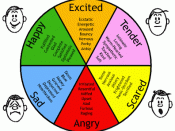TABLE OF CONTENTS1.0 INTRODUCTION2.0 EMOTIONS2.1 Definitions2.2 Appraisal psychological theories3.0 IMPACT ON COSUMER3.1Effect on memory3.2Effect on evaluation3.3 Effect on information processing3.3 Effect on decision making3.4 Effect on behavior4.0 COMMON MISTAKES OF EMOTIONAL MARKETING5.0 CONCLUSION6.0 BIBILIOGRAPHY6.1References6.2Related readings1.0INTRODUCTION:Demographic and economic changes, technological advances, increased global competition, emphasis on quality, and customer demands are forcing companies to change. Customers are changing, and the power dynamic is shifting from the sellers (companies) to the buyers (customers). With these changes comes recognition that new strategies are needed to maintain a competitive stance. A change in the corporate philosophy is necessary to create new ways of thinking about their business and their customers, and align their procedures and ways of work with tomorrow's customer needs. While past produced a corporate philosophy of efficiency, honed a reputation for punctual and reliable service, and created a "cookie cutter" operations the present and future demand a focus on quality, customer satisfaction, and creativity.
Emphasis has shifted from:Standardization of operations to customization of servicesThe needs of the organization to those of the customerPlaying it safe, to gambling with innovative services, technology, and new markets.
Functional-based structure to one that is centered on processThe efficiency-oriented operations take pride in being full of logic and predictability, and tend to treat the customer accordingly. Emotions make the corporate world uncomfortable. The perception is that since emotions cannot be conformed to reports and calculations (predictability), they must be ignored. Since emotions cannot fit into financial models, so are treated as irrational behavior (Arussy 2004).
Recent neurological discoveries indicate that most people live along the low road, neurologically speaking i.e.
The subconscious dominates.
Feel before think.
Think in images.
This means that a sense-feel-(think)-do model of decision-making drives the consumer behavior. From a marketing perspective this can be translated in into a strategic imperative: Build a...


